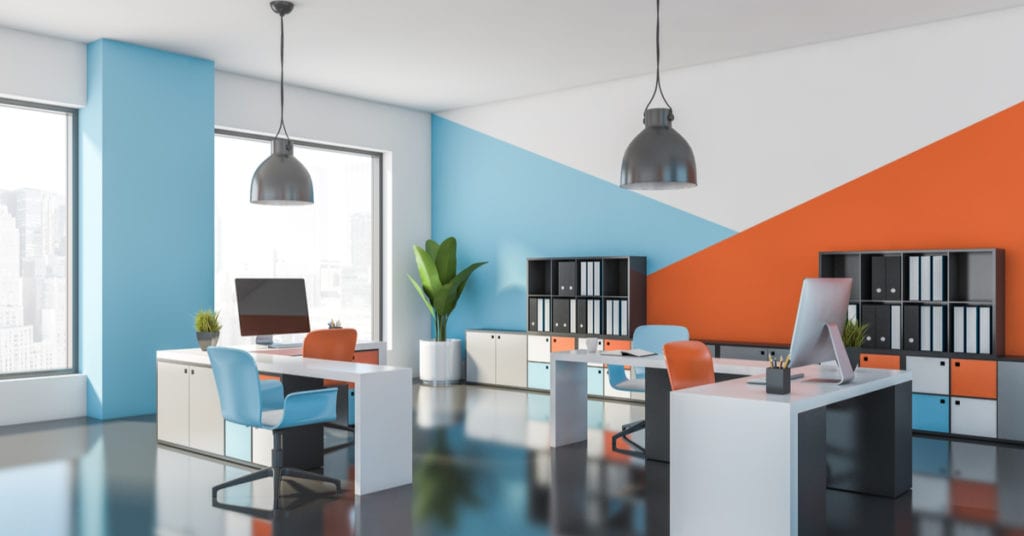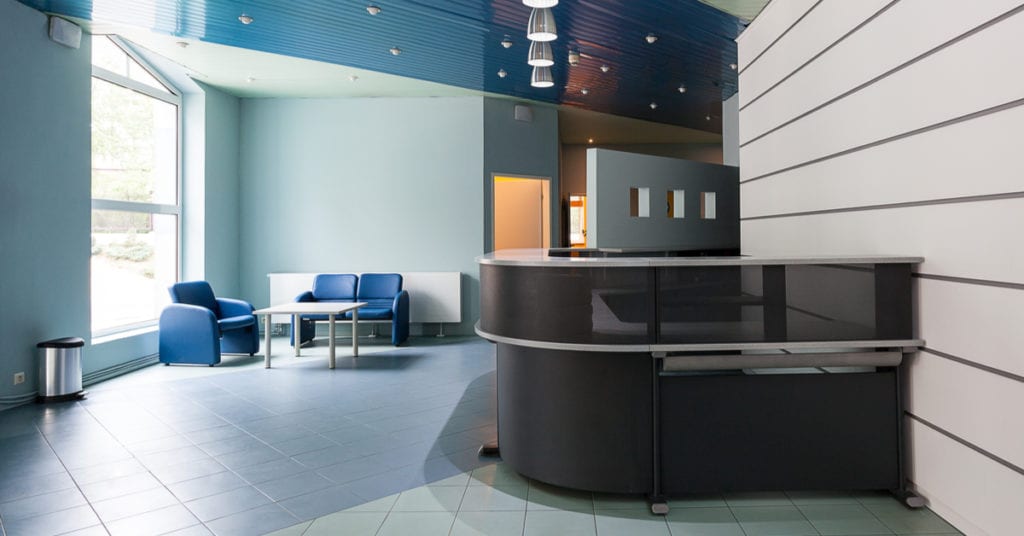How Office Paint Color Can Affect Productivity
Do you think colors affect office productivity?
Choosing the right color to paint your office walls is more than just an aesthetic issue. Colors have a profound impact on productivity and emotion, and painting your office walls the wrong color could have an adverse effect on how hard your employees work. While the feelings associated with each color are mostly dependent on many different factors, there are still many common patterns regarding color and productivity.
The color on your office walls that your employees see every day profoundly impacts their behavior.
Below we show you the impact of color in the workplace so you can consider these factors when deciding how to paint and decorate your workplace.
White
White is a very clean and pure color, but it’s not necessarily the greatest color to paint your walls with. However, white can be incredibly dull and even intimidating. A study by the Center for Health Design found that white often has a “clinical appearance” and therefore makes many people very uncomfortable. You should use white as an accent color or use an off-white color instead.
Gray
Gray is not much different from white in terms of productivity. It encourages people to be sluggish and unenthusiastic about their work. This color is bland and often very depressing, and gray walls will demotivate your workers.
Red
Red is the color of love, anger, blood, and passion. Red is an intense color, and it may stress out your employees, replacing critical thinking with anger and haste. Red also makes people hungrier, which is why McDonald’s, Domino’s, KFC, and just about every other fast food brand uses the color. You certainly don’t want to make your workers hungry when they’re on the job.
Blue

Blue is one of the best colors for technology companies’ logos; the color exudes intelligence, quality, and calmness. Blue’s stable calming nature helps employees relax and concentrate on their work. Too much blue can cause workers to lag, so perhaps add a red, yellow, or orange touch. You could also paint one wall dark blue and paint the rest light blue. Dark blue encourages solace, and light blue promotes harmony.
Green
One of the best aspects of green is that it relieves strain on the eyes, making it the best color for workers who spend much time on the computer. Much like blue, green helps keep people calm and efficient.
Lavender
This color helps promote calmness, determination, and imagination, making it great for technology and marketing companies. It allows workers to stay productive while staying calm.
Conclusion
So, we now know that colors affect office productivity. It’s been shown that red and white are the wrong colors for office walls and that blue and green help productivity. The best colors are the ones that help people remain calm while still encouraging them to stay productive.
“For workspaces, neutrals and softer, more grayed hues are better for concentration and preventing eye fatigue,” said Sherwin-Williams’s Director of Color Marketing Jackie Jordan.
Are you considering updating your office, whether it be in your home or another location? Let the expert painting contractors at Carolina Blue Painting guide you as to the best colors for you and the office. Contact us here. We look forward to helping you.
We hope you have gained a bit of informative information reading our blog, “How Colors Affect Office Productivity.”

